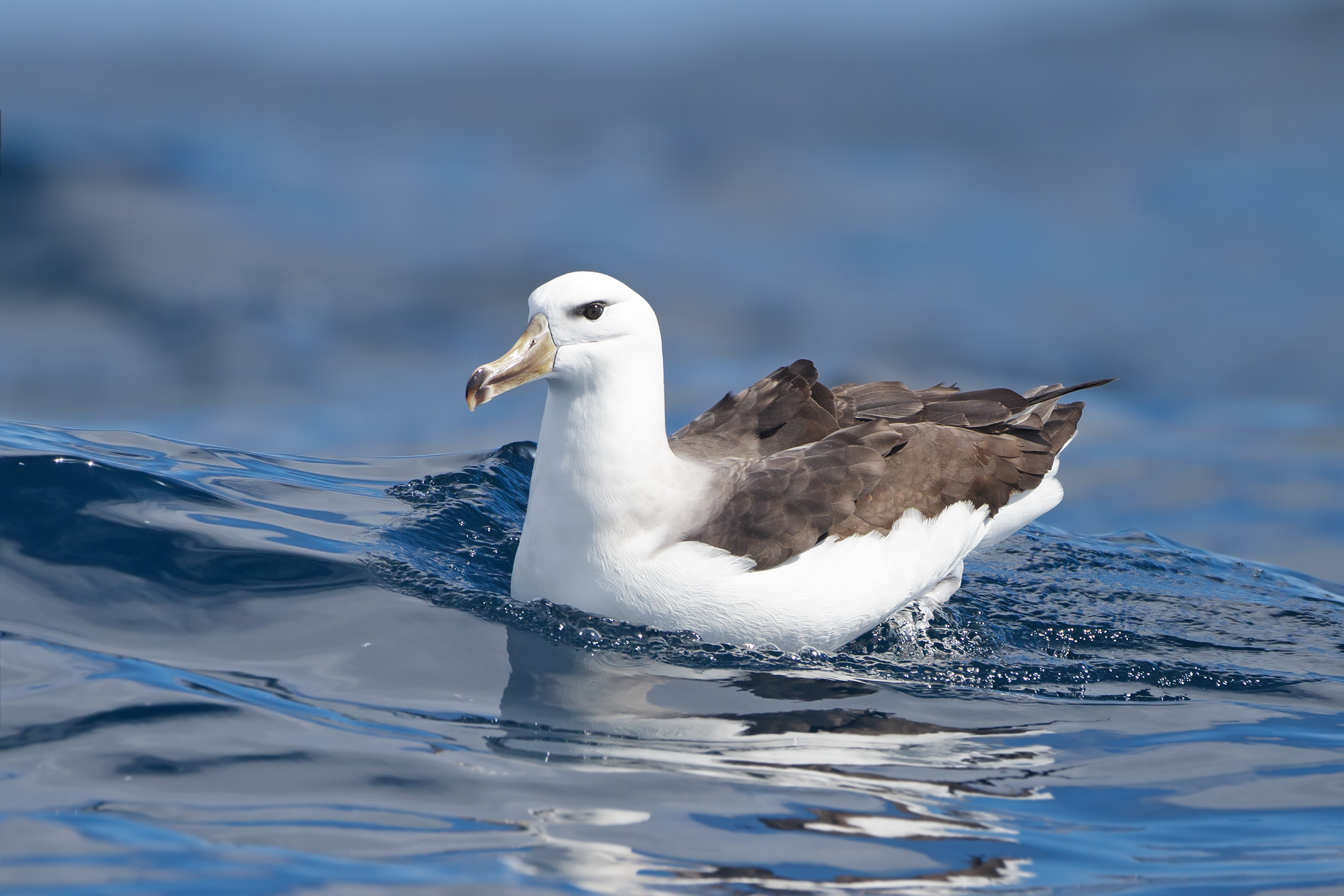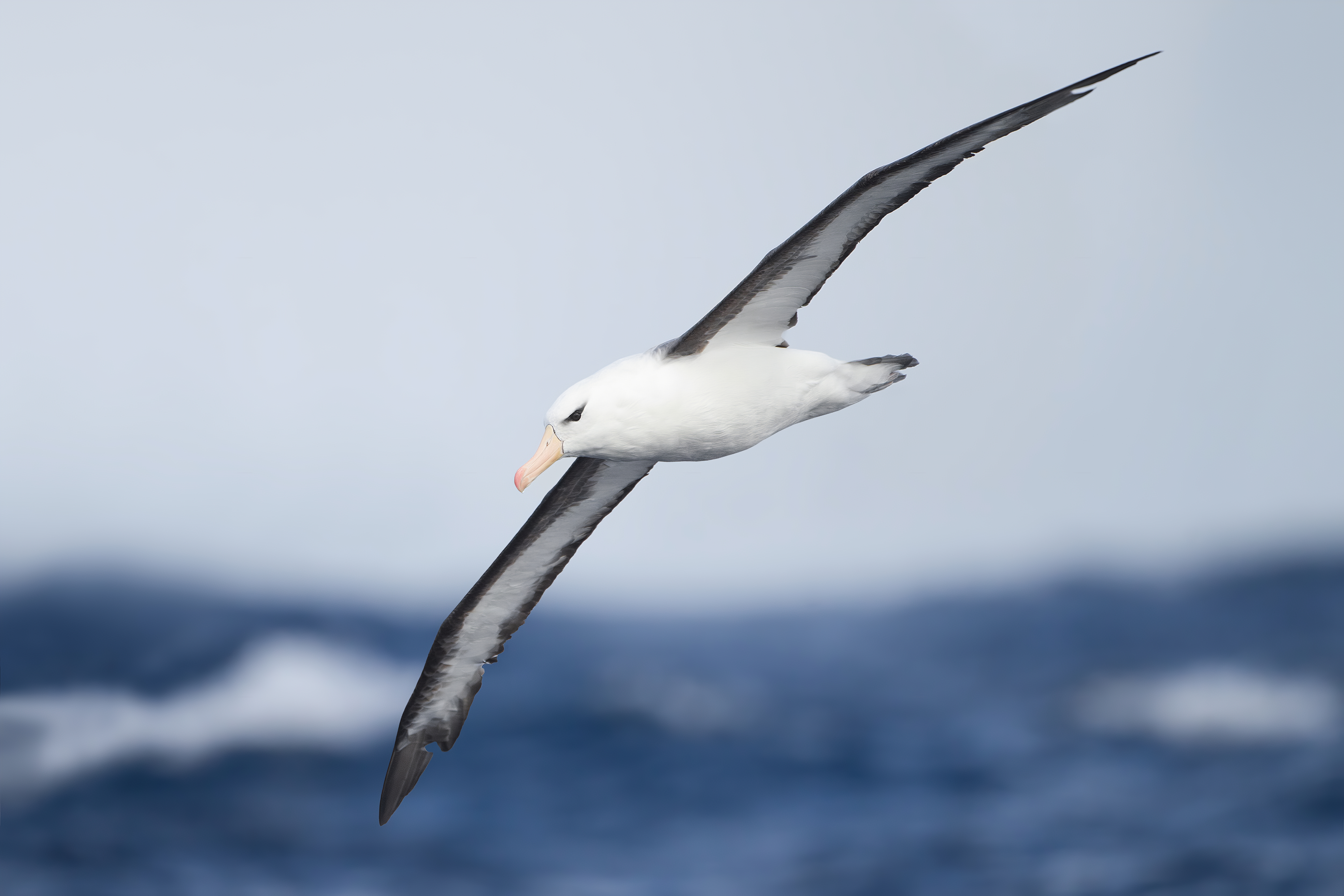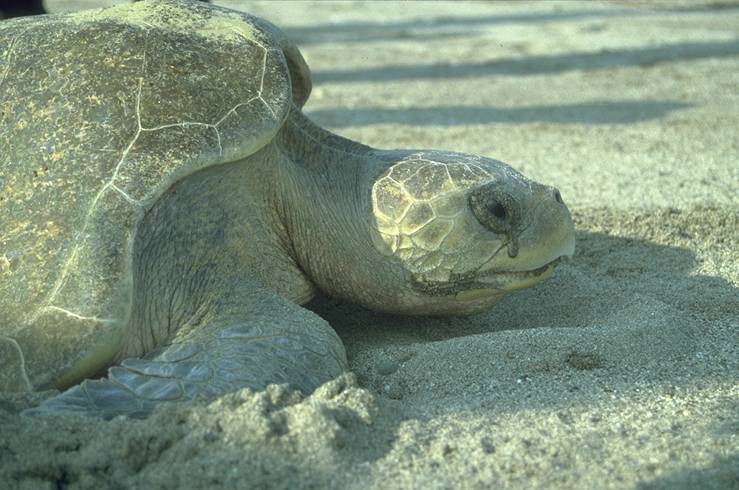|
Thalassarche
The mollymawks are a group of medium-sized albatrosses that form the genus ''Thalassarche''. The name has sometimes been used for the genus ''Phoebetria'' as well, but these are usually called sooty albatrosses. They are restricted to the Southern Hemisphere, where they are the most common of the albatrosses. They were long considered to be in the same genus as the great albatrosses, ''Diomedea'', but a study of their mitochondrial DNA showed that they are a monophyletic taxon related to the sooty albatrosses, and they were placed in their own genus. Taxonomy The genus ''Thalassarche'' was introduced in 1853 by the German naturalist Ludwig Reichenbach with the black-browed albatross as the type species. The genus name combines the Ancient Greek ''thalassa'' meaning "sea" and ''arkhē'' meaning "power" or "command" (from ''arkhō'', to govern). The word ''mollymawk'', which dates to the late 17th century, comes from the Dutch ''mallemok'', which means ''mal'' – foolish and ''m ... [...More Info...] [...Related Items...] OR: [Wikipedia] [Google] [Baidu] |
Thalassarche Cauta
The shy albatross, also known as shy mollymawk, (''Thalassarche cauta'', formerly ''Diomedea cauta''), is a medium-sized albatross that breeds on three remote islands off the coast of Tasmania, Australia, in the southern Indian Ocean. Its lifespan is about 60 years, and it has been seen as far afield as South Africa and the Pacific coast of the United States. , the species is listed as "Endangered" in Australia; there are thought to be 15,000 pairs of shy albatross left. It is Australia's only endemic albatross. Some authorities call this species the white-capped albatross, but the White-capped albatross is generally the common name given to ''Thalassarche cauta steadi''. Taxonomy This mollymawk was once considered to be the same species as the Salvin's albatross, ''Thalassarche salvini'' and the Chatham albatross, ''Thalassarche eremita'', but they were split around 2004. In 1998, Robertson and Nunn suggested a four-way split including the white-capped albatross, ''Thala ... [...More Info...] [...Related Items...] OR: [Wikipedia] [Google] [Baidu] |
Black-browed Albatross
The black-browed albatross (''Thalassarche melanophris''), also known as the black-browed mollymawk,Robertson, C. J. R. (2003) is a large seabird of the albatross family Diomedeidae; it is the most widespread and common member of its family. Taxonomy Mollymawks are albatrosses in the family Diomedeidae and order Procellariiformes, which also includes shearwaters, fulmars, storm petrels, and diving petrels. These birds share certain identifying features. They have nasal passages that attach to the upper bill called naricorns, although the nostrils on the albatross are on the sides of the bill. The bills of Procellariiformes are also unique in that they are split into between seven and nine horny plates. They produce a stomach oil made up of wax esters and triglycerides that is stored in the proventriculus. This is used against predators as well as being an energy-rich food source for chicks and also for the adults during their long flights. The albatross also has a salt gland a ... [...More Info...] [...Related Items...] OR: [Wikipedia] [Google] [Baidu] |
Black-browed Albatross
The black-browed albatross (''Thalassarche melanophris''), also known as the black-browed mollymawk,Robertson, C. J. R. (2003) is a large seabird of the albatross family Diomedeidae; it is the most widespread and common member of its family. Taxonomy Mollymawks are albatrosses in the family Diomedeidae and order Procellariiformes, which also includes shearwaters, fulmars, storm petrels, and diving petrels. These birds share certain identifying features. They have nasal passages that attach to the upper bill called naricorns, although the nostrils on the albatross are on the sides of the bill. The bills of Procellariiformes are also unique in that they are split into between seven and nine horny plates. They produce a stomach oil made up of wax esters and triglycerides that is stored in the proventriculus. This is used against predators as well as being an energy-rich food source for chicks and also for the adults during their long flights. The albatross also has a salt gland a ... [...More Info...] [...Related Items...] OR: [Wikipedia] [Google] [Baidu] |
Albatross
Albatrosses, of the biological family Diomedeidae, are large seabirds related to the procellariids, storm petrels, and diving petrels in the order Procellariiformes (the tubenoses). They range widely in the Southern Ocean and the North Pacific. They are absent from the North Atlantic, although fossil remains show they once occurred there and occasional vagrants are found. Albatrosses are among the largest of flying birds, and species of the genus ''Diomedea'' (great albatrosses) have the longest wingspans of any extant birds, reaching up to . The albatrosses are usually regarded as falling into four genera, but disagreement exists over the number of species. Albatrosses are highly efficient in the air, using dynamic soaring and slope soaring to cover great distances with little exertion. They feed on squid, fish, and krill by either scavenging, surface seizing, or diving. Albatrosses are colonial, nesting for the most part on remote oceanic islands, often with several spe ... [...More Info...] [...Related Items...] OR: [Wikipedia] [Google] [Baidu] |
Diomedeidae
Albatrosses, of the biological family Diomedeidae, are large seabirds related to the procellariids, storm petrels, and diving petrels in the order Procellariiformes (the tubenoses). They range widely in the Southern Ocean and the North Pacific. They are absent from the North Atlantic, although fossil remains show they once occurred there and occasional vagrants are found. Albatrosses are among the largest of flying birds, and species of the genus ''Diomedea'' (great albatrosses) have the longest wingspans of any extant birds, reaching up to . The albatrosses are usually regarded as falling into four genera, but disagreement exists over the number of species. Albatrosses are highly efficient in the air, using dynamic soaring and slope soaring to cover great distances with little exertion. They feed on squid, fish, and krill by either scavenging, surface seizing, or diving. Albatrosses are colonial, nesting for the most part on remote oceanic islands, often with several specie ... [...More Info...] [...Related Items...] OR: [Wikipedia] [Google] [Baidu] |
Procellariiformes
Procellariiformes is an order of seabirds that comprises four families: the albatrosses, the petrels and shearwaters, and two families of storm petrels. Formerly called Tubinares and still called tubenoses in English, procellariiforms are often referred to collectively as the petrels, a term that has been applied to all members of the order,Warham, J. (1996). ''The Behaviour, Population, Biology and Physiology of the Petrels''. London: Academic Press, or more commonly all the families except the albatrosses.Brooke, 2004. They are almost exclusively pelagic (feeding in the open ocean), and have a cosmopolitan distribution across the world's oceans, with the highest diversity being around New Zealand. Procellariiforms are colonial, mostly nesting on remote, predator-free islands. The larger species nest on the surface, while most smaller species nest in natural cavities and burrows. They exhibit strong philopatry, returning to their natal colony to breed and returning to th ... [...More Info...] [...Related Items...] OR: [Wikipedia] [Google] [Baidu] |
Proventriculus
The proventriculus is part of the digestive system of birds.Encarta World English Dictionary orth American Edition(2007). ''Proventriculus''. Source: (accessed: December 18, 2007) An analogous organ exists in invertebrates and insects. Birds The proventriculus is a standard part of avian anatomy, and is a rod shaped organ, located between the esophagus and the gizzard of most birds. It is generally a glandular part of the stomach that may store and/or commence digestion of food before it progresses to the gizzard. The primary function of the proventriculus is to secrete hydrochloric acid (HCl) and pepsinogen into the digestive compartments that will churn the ingested material through muscular mechanisms. The Encarta (2007) holds that the proventriculus is: The first part of a bird's stomach, where digestive enzymes are mixed with food before it goes to the gizzard. It is analogous to the gizzard in insects and crustaceans. Thomas Cecere (College of Veterinary Medicine of Virgi ... [...More Info...] [...Related Items...] OR: [Wikipedia] [Google] [Baidu] |
Triglycerides
A triglyceride (TG, triacylglycerol, TAG, or triacylglyceride) is an ester derived from glycerol and three fatty acids (from ''tri-'' and ''glyceride''). Triglycerides are the main constituents of body fat in humans and other vertebrates, as well as vegetable fat. They are also present in the blood to enable the bidirectional transference of adipose fat and blood glucose from the liver, and are a major component of human skin oils. Many types of triglycerides exist. One specific classification focuses on saturated and unsaturated types. Saturated fats have ''no'' C=C groups; unsaturated fats feature one or more C=C groups. Unsaturated fats tend to have a lower melting point than saturated analogues; as a result, they are often liquid at room temperature. Chemical structure Triglycerides are tri-esters consisting of a glycerol bound to three fatty acid molecules. Alcohols have a hydroxyl (HO–) group. Organic acids have a carboxyl (–COOH) group. Alcohols and organic a ... [...More Info...] [...Related Items...] OR: [Wikipedia] [Google] [Baidu] |
Fossil
A fossil (from Classical Latin , ) is any preserved remains, impression, or trace of any once-living thing from a past geological age. Examples include bones, shells, exoskeletons, stone imprints of animals or microbes, objects preserved in amber, hair, petrified wood and DNA remnants. The totality of fossils is known as the ''fossil record''. Paleontology is the study of fossils: their age, method of formation, and evolutionary significance. Specimens are usually considered to be fossils if they are over 10,000 years old. The oldest fossils are around 3.48 billion years old to 4.1 billion years old. Early edition, published online before print. The observation in the 19th century that certain fossils were associated with certain rock strata led to the recognition of a geological timescale and the relative ages of different fossils. The development of radiometric dating techniques in the early 20th century allowed scientists to quantitatively measure the ... [...More Info...] [...Related Items...] OR: [Wikipedia] [Google] [Baidu] |
Stomach Oil
Stomach oil is the light oil composed of neutral dietary lipids found in the proventriculus (fore-gut) of birds in the order Procellariiformes. All albatrosses, procellarids (gadfly petrels and shearwaters) and northern and austral storm petrels use the oil. The only Procellariiformes that do not are the diving petrels. The chemical make up of stomach oil varies from species to species and between individuals, but almost always contains both wax esters and triglycerides. Other compounds found in stomach oil include glycerol ethers, pristane and squalene. Stomach oil has low viscosity and will solidify into a hard wax if allowed to cool. It was once thought that stomach oil was a secretion of the proventriculus, but it is now known to be a residue of the diet created by digestion of the prey items such as krill, squid, copepods and fish. It is thought to serve several functions for Procellariiformes, primarily as an energy store; its calorific value is around 40 MJ/kg (9.6 ... [...More Info...] [...Related Items...] OR: [Wikipedia] [Google] [Baidu] |
Salt Gland
The salt gland is an organ for excreting excess salts. It is found in the cartilaginous fishes subclass elasmobranchii (sharks, rays, and skates), seabirds, and some reptiles. Salt glands can be found in the rectum of sharks. Birds and reptiles have salt glands located in or on the skull, usually in the eyes, nose, or mouth. These glands are lobed containing many secretory tubules which radiate outward from the excretory canal at the center. Secretory tubules are lined with a single layer of epithelial cells. The diameter and length of these glands vary depending on the salt uptake of the species. Salt glands maintain salt balance and allow marine vertebrates to drink seawater. Active transport via sodium–potassium pump, found on the basolateral membrane, moves salt from the blood into the gland, where it is excreted as a concentrated solution. In birds The avian salt gland has two main ducts which are a medial and a lateral. Salt gland activations occurs from increased o ... [...More Info...] [...Related Items...] OR: [Wikipedia] [Google] [Baidu] |
Naricorns
A nostril (or naris , plural ''nares'' ) is either of the two orifices of the nose. They enable the entry and exit of air and other gasses through the nasal cavities. In birds and mammals, they contain branched bones or cartilages called turbinates, whose function is to warm air on inhalation and remove moisture on exhalation. Fish do not breathe through noses, but they do have two (but cyclostomes have merged into one) small holes used for smelling, which can also be referred to as nostrils. In humans, the nasal cycle is the normal ultradian cycle of each nostril's blood vessels becoming engorged in swelling, then shrinking. The nostrils are separated by the septum. The septum can sometimes be deviated, causing one nostril to appear larger than the other. With extreme damage to the septum and columella, the two nostrils are no longer separated and form a single larger external opening. Like other tetrapods, humans have two external nostrils (anterior nares) and two additi ... [...More Info...] [...Related Items...] OR: [Wikipedia] [Google] [Baidu] |










